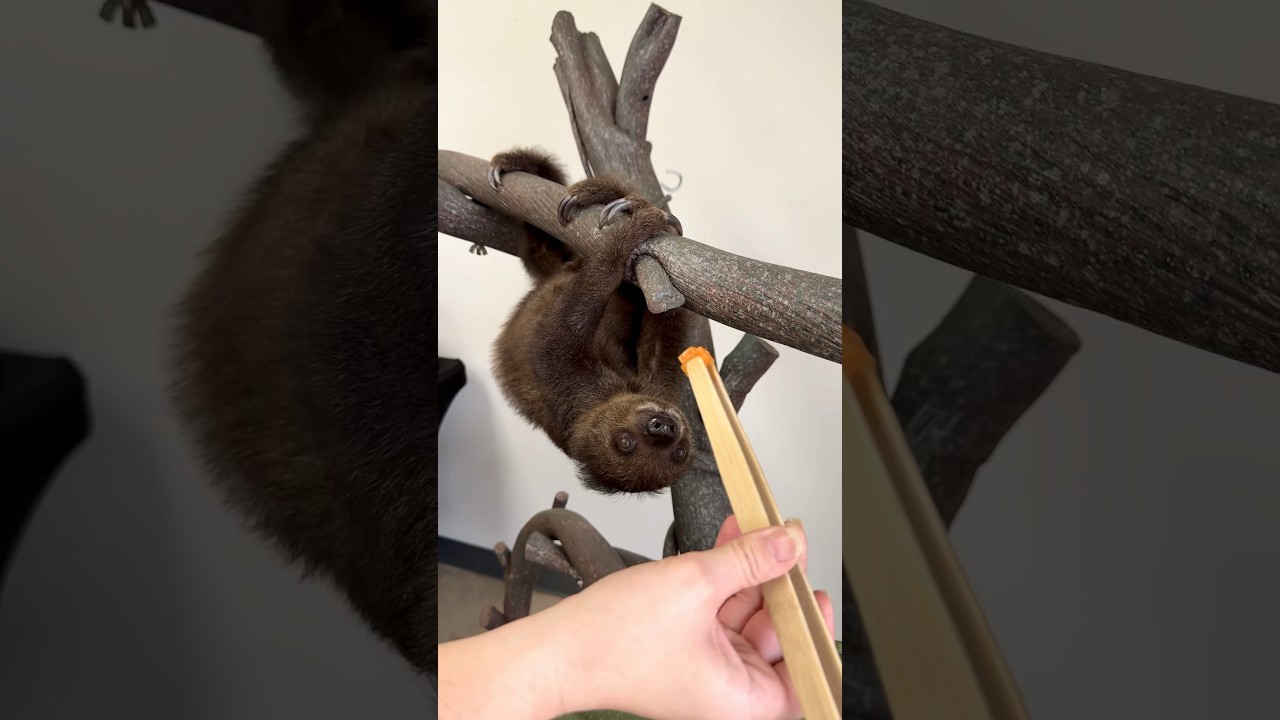– Aluna’s Species: Delving into the world of two-toed sloths and their unique characteristics
– Behind the Scenes: Uncovering the daily life and dietary preferences of a young sloth in captivity
– Conservation Efforts: Understanding the importance of sloth preservation and the role of zoos in safeguarding these creatures
—
Have you ever wondered what it’s like to be slow-moving yet captivating, hanging out in treetops while the world rushes beneath you? Let’s unravel the tale of Aluna, a gentle and endearing baby sloth, and discover the world through her leisurely eyes.
**Her Laid-back Legacy: An Introduction to Two-Toed Sloths**
The protagonists of our story are seldom appreciated at the speed they deserve. Two-toed sloths, like our friend Aluna, hail from a lineage where taking it slow isn’t just a lifestyle choice—an art form perfected over millions of years of evolution. Native to Central and South America’s rainforests, these tree-dwelling mammals are known for their deliberate and energy-efficient movements.
Sloths like Aluna belong to a group known as Xenarthra, which also includes armadillos and anteaters. This group boasts some curious features—such as extra vertebrae, that grant them uncanny neck flexibility, enabling Aluna to turn her head almost 270 degrees! Talk about a panoramic view without moving an inch!
**A Day in the Life: Leisure, Leaves, and Lounging**
To truly appreciate the essence of a sloth’s day, we must tune into a different frequency that values the quality of moments over quantity. Aluna spends most of her time nestled among the treetops, where the buffet of leaves awaits her leisurely indulgence.
These gentle plant-eaters have a surprisingly low-energy diet consisting mostly of leaves, twigs, and buds. As herbivores, sloths like Aluna boast a complex four-chambered stomach, akin to a cow, where specialized microbes break down the tough fibrous plant material. It’s a digestive gala that takes its sweet time, often outlasting the most patient of pauses.
**Growing Up Sloth: The Pace of Development in a Captive Setting**
Aluna is a burgeoning youngling in the world of sloths, learning the ropes of her arboreal habitat with an adorably clumsy grace. Baby sloths often depend on their mothers for sustenance and guidance during their early life stages. However, keepers fill those nurturing shoes under human care, ensuring Aluna gets all she needs to flourish.
Sloths mature at a leisurely pace. It takes many months, sometimes years, for a sloth pup to fully embrace their independent streak. In a zoo setting, sloths like Aluna benefit from specialized care replicating their natural upbringing. This helps them develop the strong muscles necessary to uphold their characteristic hang and the sharp instincts they need to thrive amidst the foliage.
**Conservation: Why Every Sloth Counts**
Zoos and conservation centers aren’t just about providing a haven for adorable creatures like Aluna. They serve a grander purpose—a bastion against species’ decline like the two-toed sloth. With deforestation, habitat destruction, and climate change casting long shadows over the survival of sloths in the wild, these conservation efforts become ever more crucial.
Breeding programs and educational initiatives help ensure the stability of sloth populations and foster a well-informed public armed with knowledge and empathy to protect these amazing creatures. Aluna might be one sloth among many, but her story serves as a reminder of our interconnectedness with nature and our responsibility for preserving it.
With a canvas set and the story unraveled, it’s time to paint a picture of this fascinating world where a young sloth like Aluna can capture the hearts of many with her insatiable appetite for leaves and infectious calmness. So, grab your preferred treat, settle into a comfortable nook, and journey with me into the captivating life of a sloth in the modern world.
**The Artistry of Aluna’s Ancestry**
Sloths haven’t always been the tree-hugging icons we picture today. Picture an era long ago when giant ground sloths roamed the Earth, some as large as a modern-day elephant. They were an impressive sight to behold. Yet, through the epochs, evolution favored the smaller, tree-dwelling variants, which could escape predators by ascending to the safety of the canopy—this legacy of survival courses through Aluna’s veins.
Two-toed sloths, which include Aluna’s lineage, are one of the two types of existing sloths, with the other being the three-toed sloth. These cousins share many traits but are distinguished by the number of digits on their forelimbs, as their names suggest. It’s a subtle difference that hints at their separate evolutive paths.
**Leafy Banquets: Aluna’s Gourmet Selection**
Imagine a world where time has no dominion and feasting on a leaf unfurls into a moment of existential bliss. Aluna partakes in such moments multiple times throughout the day. Her kind’s low-calorie menu might puzzle the uninitiated, raising questions about surviving such a Spartan diet. It’s all about energy conservation, where every chew is a measured step, and digestion is not a race but a marathon.
*****
Source Description


